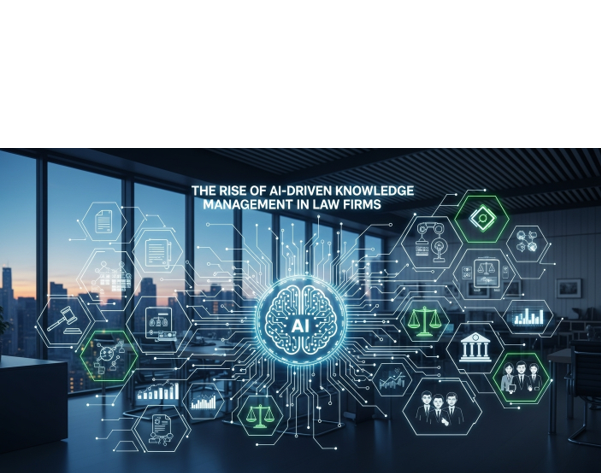Voice technology is no longer futuristic; it’s everywhere. We speak to our phones, homes, cars, and even appliances. But while voice assistants have become familiar, their work hasn’t kept up with our lives. Most still depend on the cloud, sending every spoken word to a remote server before returning a response. That approach slows things down, risks user privacy, and requires always-on connectivity.
Smallest.ai flips that model. Powering voice assistants that run directly on the device cuts the cord between interaction and infrastructure; no round trips to the cloud. No lag. Just fast, private, and offline-capable voice experiences. In this article, we look at how Smallest.ai is building the future of voice; one that works at the edge, with intelligence that stays close to the user.
The Shift from Cloud to Edge Computing
Edge computing moves data processing away from distant servers and closer to where it’s actually needed: on the device itself. This shift is critical for voice technology. Voice-based systems must process commands in real time; even minor delays can break the experience. Edge computing solves this by minimizing the distance data travels, improving responsiveness and control.
Smallest.ai is designed around this exact principle. Instead of relying on cloud infrastructure, it enables voice applications to run locally. This architecture reduces latency and strengthens data protection by keeping user information on the device.
Benefits of Edge Processing
- Reduced Latency for Real-Time Feedback
Voice commands are processed directly on the device, enabling immediate responses. There’s no round-trip to a server; just fast, fluid interaction. - Stronger Data Privacy by Design
Sensitive audio inputs stay on-device. By eliminating the need to upload voice data to the cloud, Smallest.ai lowers exposure to data leaks and unauthorized access. - Consistent Reliability, Even Offline
Voice-enabled devices continue working in low or no connectivity environments. This resilience is especially valuable in remote locations or when the internet drops.
Real-World Applications
Picture a smart home where your voice assistant doesn’t pause or fail because of poor internet. Lights, locks, thermostats, and appliances respond instantly because the intelligence lives on the device. This isn’t theoretical; it’s already happening.
With Smallest.ai, developers are building voice-powered experiences that are faster, more private, and more reliable.
Advanced AI Algorithms for Voice Recognition
Artificial intelligence isn’t just supporting voice recognition anymore; it’s redefining how voice interfaces operate. At the heart of Smallest.ai is a set of advanced, purpose-built algorithms designed for fast, adaptive, and privacy-first voice interactions. These models don’t just convert speech to text. They learn. They adjust. And they deliver increasingly personalized experiences based on how individuals speak, when they speak, and what they mean.
Key Features of Smallest.ai’s AI Technology
- Natural Language Processing (NLP): Goes beyond basic command recognition. It enables the assistant to interpret nuances, tone, and intent, creating more fluid conversations.
- On-Device Machine Learning: Every interaction improves the next one. Smallest.ai learns locally, meaning it evolves without sending user data elsewhere.
- Voice Cloning with Consent: Smallest.ai can generate synthetic voices using a short sample. This opens doors for inclusive design, content creators, and accessibility solutions, while always prioritizing user control and opt-in.
Impact on User Experience
The result is a voice interface that feels less like a tool and more like a teammate. Users don’t have to repeat themselves or speak in stiff commands. They get natural, responsive interaction that adapts to their speaking style and grows more helpful over time. Whether navigating complex prompts or handling multiple accents, Smallest.ai ensures the AI sounds human and listens like one, too.
Privacy and Security Considerations
Voice technology brings convenience, but also legitimate concerns. Users want faster interactions, not deeper surveillance. Smallest.ai. ai addresses this tension by embedding privacy into its core architecture. Instead of routing audio through external servers, it processes voice commands directly on the device. This local-first approach drastically reduces the surface area for data leaks and unauthorized tracking.
Security Measures Implemented by Smallest.ai
- On-Device Processing: Voice inputs are analyzed and responded to on the user’s device, eliminating the need for cloud-based handling and reducing exposure to external threats.
- End-to-End Encryption: When data transmission is necessary, Smallest.ai ensures it’s encrypted at every step, from device to endpoint, protecting integrity and confidentiality.
- Granular User Controls: Users aren’t just passive participants. They can review, manage, and delete their data directly through the interface, putting absolute control in their hands.
Privacy isn’t just a feature; it’s a foundation for trust. Smallest.ai allows users to adopt voice technology without hesitation by designing for security. The result? A platform that feels responsive, personal, and safe, not invasive.
The next evolution is already underway as voice assistants become more central to how we work, live, and communicate.
The Future of Voice Assistants
Voice technology is evolving rapidly, but where it’s headed next is even more transformative. Several key shifts are already shaping the roadmap for the future of voice assistants:
- Increased Personalization
AI will go beyond simple preference recall to dynamically adapt to a user’s tone, context, and emotional cues. Voice assistants will become more attuned to how users speak, not just what they say. - Deep Integration with IoT Ecosystems
Voice will serve as the primary interface across smart homes, vehicles, and workplaces, enabling seamless control and coordination of devices. Assistants will act more like orchestrators, anticipating user needs rather than simply responding. - Multilingual and Multi-Dialect Support
As usage expands globally, the next generation of voice assistants must handle diverse languages and dialects natively. This will remove barriers to adoption and create more inclusive user experiences. - Context-Aware Interaction
Tomorrow’s assistants will carry context across conversations, apps, and devices. This means smarter follow-ups, fewer repetitions, and a shift from command-based input to natural dialogue.
Smallest.ai’s Vision
Smallest.ai is not waiting for this future; it’s actively building it. With Atoms AI at its core, the platform brings edge-based intelligence that allows voice assistants to operate quickly, with privacy and adaptability. The company is advancing:
- Offline-first capabilities that eliminate cloud dependence
- User-centric design that puts privacy and control in the hands of individuals
- Lightweight model deployment that supports broader access across devices
By focusing on what makes voice technology truly useful, responsiveness, personalization, and trust, Smallest. AI is shaping a future where voice interfaces don’t just work—they work for everyone.
Conclusion: Embracing a Voice-Driven Future
The evolution of voice technology is no longer a prediction; it’s unfolding now. Smallest.ai is leading that transformation by delivering scalable, secure, and intelligent solutions for modern voice interaction. With its commitment to privacy, performance, and accessibility, Smallest.ai is setting a new standard for what voice assistants should be: helpful, human-like, and entirely on your terms.
As adoption expands and capabilities evolve, the possibilities for voice technology are only growing. And with platforms like Smallest.ai driving that momentum, the future sounds much more intelligent.
Stay in touch to get more updates & alerts on Baddieshub! Thank you




